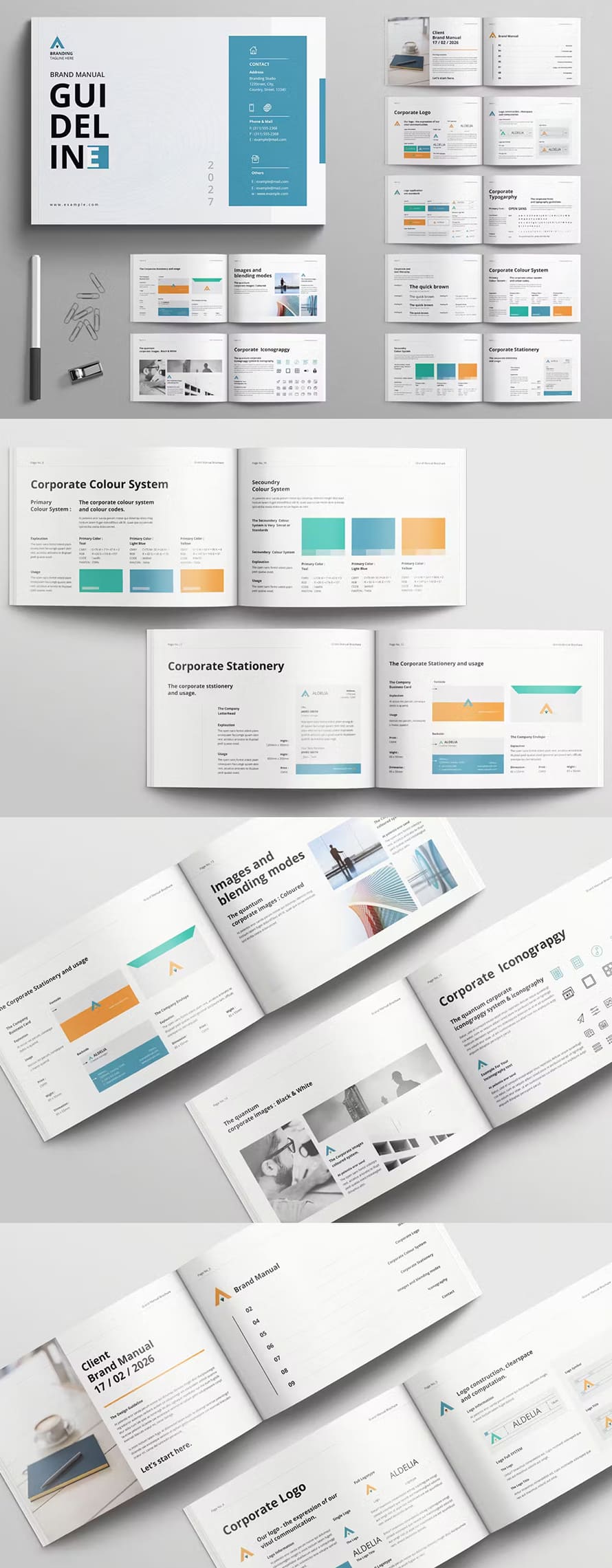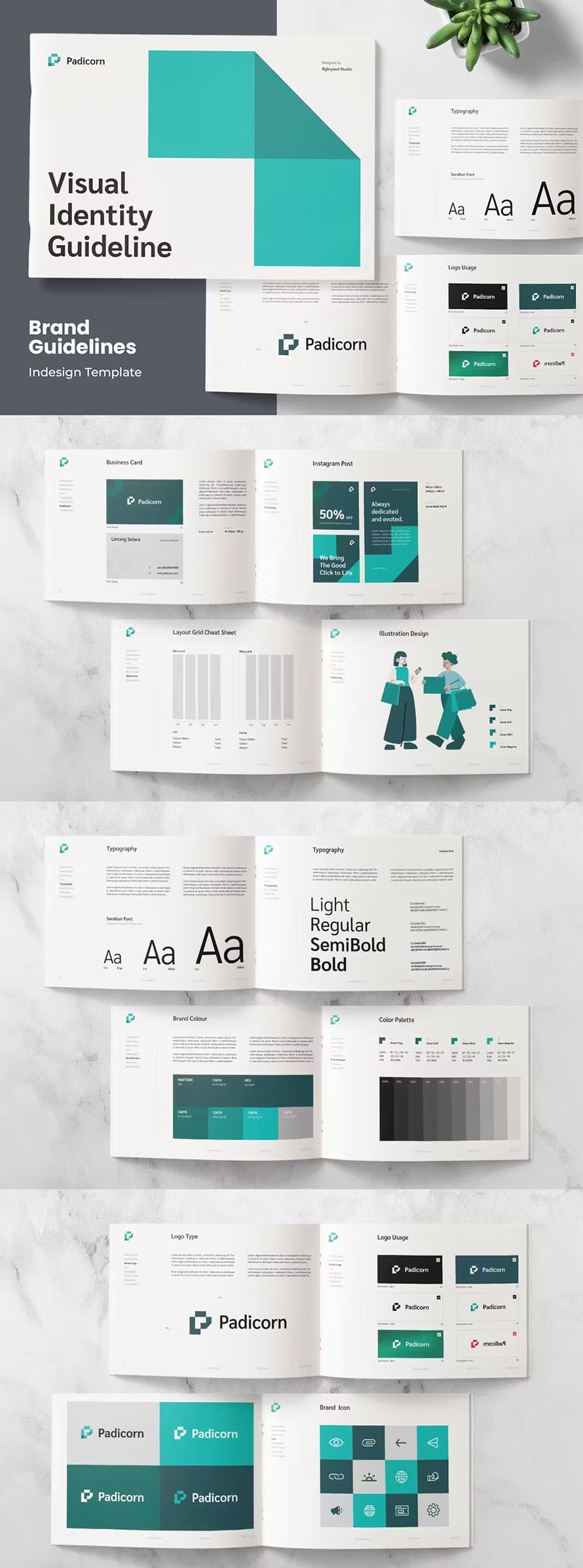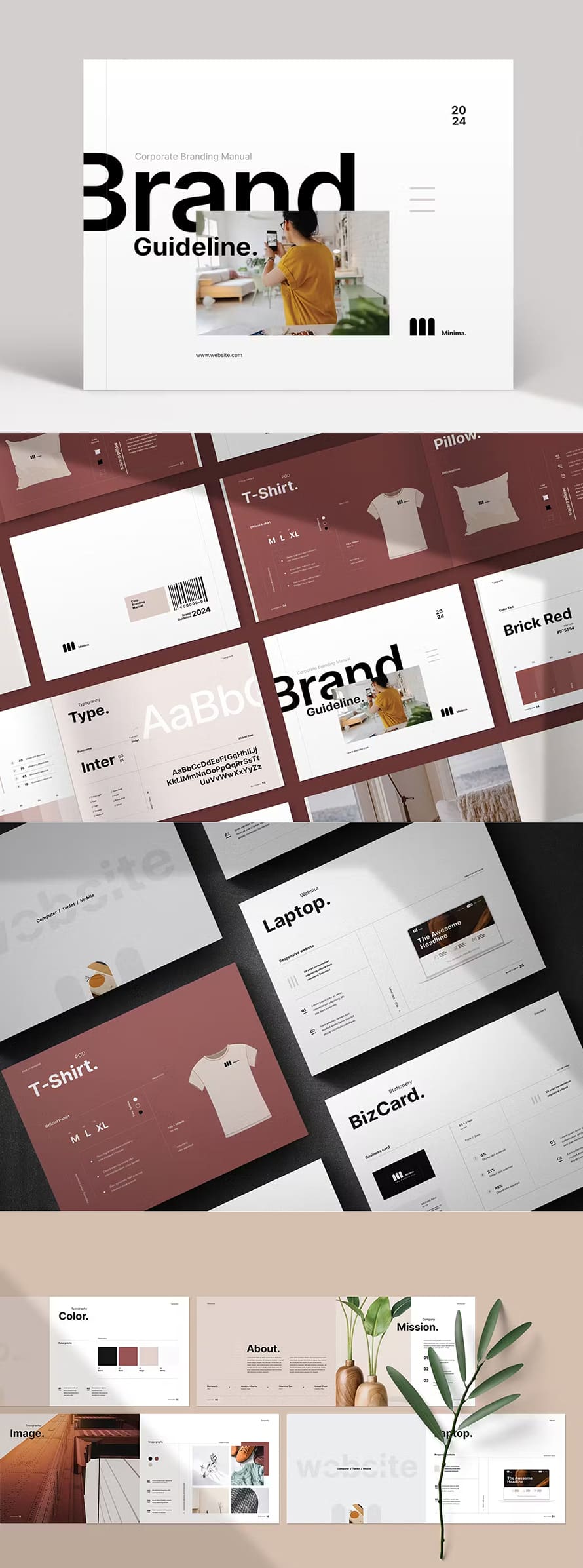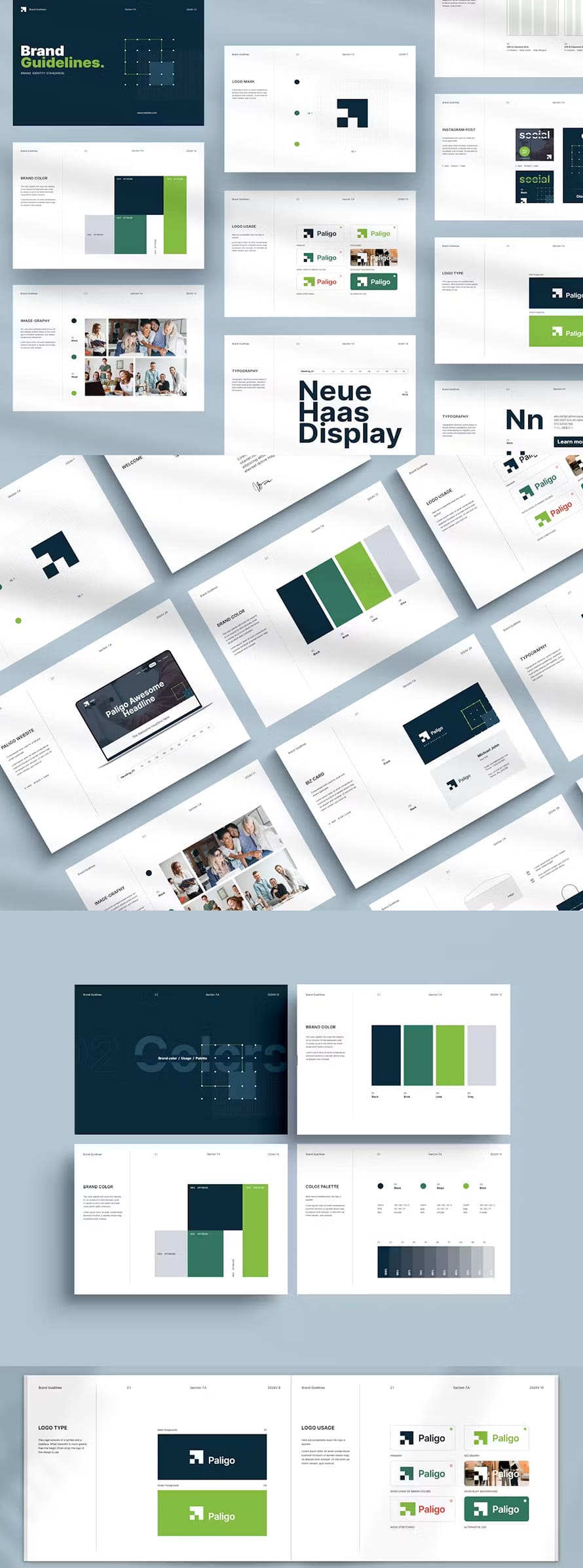In the ever-evolving digital age, where the virtual and physical worlds merge seamlessly, building brands has become a multidimensional challenge. The traditional methods of establishing a brand’s presence are no longer sufficient. Today, visual identity design plays a crucial role in defining a brand’s uniqueness, communicating its values, and ensuring its message resonates across various platforms.
This futuristic guide delves into the intricacies of building brands through visual identity design, offering a comprehensive step-by-step approach to crafting a cohesive and impactful brand idr
1. Understanding the Foundation of Visual Identity Design
At the heart of every successful brand lies a well-defined visual identity design. But what exactly does this entail? Visual identity design is the process of creating the visual elements that represent a brand, including its logo, color palette, typography, imagery, and more. These elements work together to create a consistent and recognizable brand image. Building brands through visual identity design begins with a deep understanding of the brand’s mission, vision, and values. It’s essential to establish a clear brand strategy that outlines the core message and target audience before diving into the visual elements.
2. Research and Discovery
The first step in visual identity design is research and discovery. This phase involves understanding the market, competitors, and audience. By analyzing competitors, designers can identify gaps in the market and opportunities for differentiation. Additionally, understanding the target audience’s preferences, behaviors, and needs is crucial for creating a visual identity design that resonates.

In the future, AI-driven tools will likely play a significant role in this phase, offering insights based on vast amounts of data. Predictive analytics could help designers anticipate trends and tailor visual identity design strategies accordingly. This data-driven approach will be key to building brands that are not only relevant today but also adaptable to future changes.
3. Conceptualization and Ideation
Once the research is complete, the next step in visual identity design is conceptualization and ideation. This is where creativity meets strategy. Designers begin to brainstorm ideas and concepts that align with the brand’s strategy. Mood boards, sketches, and digital prototypes are often used to explore different directions.

In the coming years, we may see the integration of virtual and augmented reality in this process, allowing designers and clients to visualize and interact with brand elements in immersive environments. This could revolutionize the way building brands and visual identity design are approached, making it easier to test and refine concepts in real-time.
4. Designing the Logo
The logo is arguably the most critical element of visual identity design. It is the face of the brand, the symbol that customers will associate with the company. A successful logo design is simple, memorable, and versatile. It should convey the brand’s essence at a glance.

In a futuristic context, logo design could evolve to include dynamic and interactive elements. For instance, logos might change based on the time of day, the user’s location, or even their personal preferences. AI and machine learning could be employed to create logos that adapt and evolve over time, ensuring they remain relevant in a constantly changing digital landscape. This adaptability could be a key differentiator when building brands in the future.
Ready to Use Logo Templates:
Explore the collection of ready-to-use logo templates designed to elevate your brand instantly. These professionally crafted templates save time and effort, offering a wide range of styles to suit any business. Perfect for quick, high-quality branding, they’re an essential tool for designers and entrepreneurs alike.
Ufo Logo Template
Podcast Logo Template
Robot Simple Mascot Logo
Camera Eyes Logo Template
Wizard Logo Template
Rhino Logo Template Line Art
5. Crafting the Color Palette

Color plays a vital role in visual identity design. Different colors evoke different emotions and associations, making the choice of color palette critical in conveying the brand’s message. When selecting colors, it’s essential to consider cultural meanings, industry standards, and the psychology of color.
In the future, we may see the rise of AI-assisted tools that suggest color palettes based on the brand’s personality and target audience. These tools could analyze successful brands within the industry and recommend colors that are both unique and impactful. This approach could streamline the process of building brands and ensure that the visual identity resonates with the intended audience.
6. Typography and Font Selection

Typography is another crucial aspect of visual identity design. The choice of font can significantly impact the brand’s tone and personality. Serif fonts, for example, often convey tradition and reliability, while sans-serif fonts can feel modern and clean.
As we move forward, customizable fonts could become more prevalent, allowing brands to create unique typefaces that reflect their identity. Variable fonts, which allow for dynamic adjustments in weight, width, and other attributes, could offer even more flexibility in building brands. This level of customization will enable brands to differentiate themselves further through visual identity design.
Check this: 50+ Best Free Fonts For Poster Design
7. Imagery and Iconography
Imagery and iconography are powerful tools in visual identity design. They can quickly communicate complex ideas and add depth to the brand’s visual language. High-quality, relevant images and icons that align with the brand’s message can enhance the overall identity.
![]()
In the future, we can expect advancements in AI-generated imagery, allowing brands to create custom visuals that perfectly align with their identity. These tools could generate images based on specific brand guidelines, ensuring consistency across all touchpoints. This will be particularly useful when building brands that require a high level of visual cohesion.
8. Creating a Consistent Brand Voice
While visual identity design focuses on the visual aspects of a brand, it’s essential to remember that the brand’s voice plays a complementary role. A consistent brand voice across all platforms and communications helps reinforce the brand’s identity. This includes everything from the tone used in marketing materials to the style of writing on social media.

In the future, AI-driven content generators could assist in maintaining a consistent brand voice across various channels. These tools could analyze past communications and generate new content that aligns with the brand’s established voice, making building brands a more streamlined process.
Check this: Top Trends in Web Design and Development Every Designer Should Know
9. Developing Brand Guidelines

Brand guidelines are the rulebook for visual identity design. They outline how the visual elements should be used to ensure consistency across all platforms and mediums. This includes specifications for logo usage, color codes, typography, imagery, and more.
In the future, brand guidelines could evolve to include interactive and dynamic elements. For example, a digital brand book could allow users to experiment with different combinations of visual elements and see real-time previews of how they would appear in various contexts. This level of interactivity could make building brands a more engaging and flexible process.
Print Ready Brand Guidelines Templates:
When creating a cohesive visual identity, check the print-ready brand guidelines templates for a polished and consistent look. These templates streamline the process, ensuring every brand element aligns perfectly across different media. Perfect for designers seeking to maintain brand integrity, these templates are a must-have for any project.
Notebook Style Brand Guideline Template
Brand Guideline Template allows you to simply add your logo, and images and edit your brand colors and typography and you’re good to go. Please don’t waste your time, we’ve done all the hard work for you.
Export and send to clients as a pdf, indd. Easy to replace typography and brand colors with your own.
A Brand Guideline Template is a great way to create a home for your business that outlines goals and details how you plan to achieve your business goals. The template includes popular business and marketing models done in good minimal design.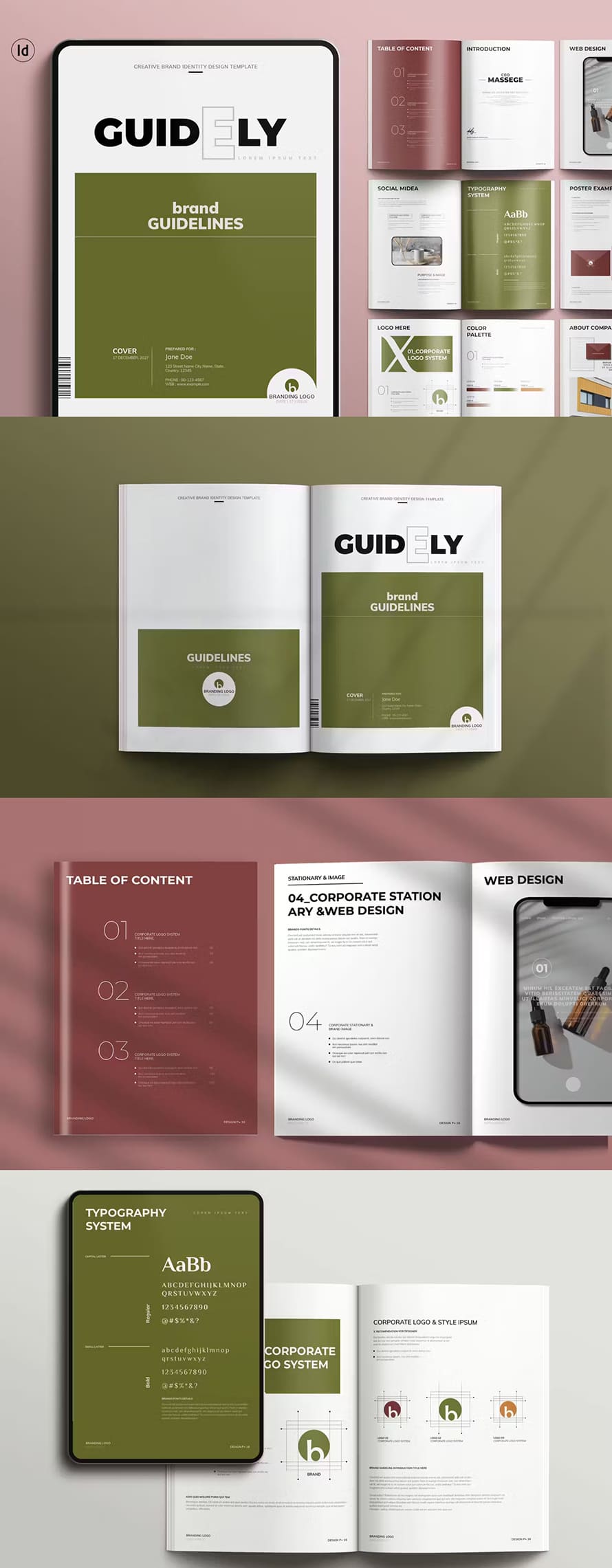
Download
Brand Manual Guidelines Landscape Template
ntroducing our Brand Manual Guidelines Landscape Template, a sleek InDesign template with 16 pages of clean design. It offers full customization and easy editing, making it the perfect tool for showcasing your brand’s identity. Unleash your creativity effortlessly.
Multipurpose Landscape Portfolio Brand Guidlines Templates
BRAND GUIDELINE- Multipurpose Landscape Portfolio Template for Adobe InDesign. Perfect for your business and to showcase your projects. Build in A4 & US letter format, Easy to use. Compatible with Adobe CS4 or latest version.
Minimal Brand Guideline Brochure Landscape
Minimal Brand Guideline Brochure Landscape Layout, Professional corporate Minimal Brand Guideline Brochure Template. Very easy-to-edit for everything with highly organized. Fully flexible and editable to create a professional and awesome look brand guideline brochure to catch eyes your business concern.
Modern Brand Guidelines Layout Templates
We have designed this template to be as flexible as possible for a variety of clients. This template features 6 sections and is packed full of features. Sections include: Brand Strategy, Logo, Colour, Typography, Imagery, Stationery, Social Media and Definitions. Majority of the copy in this template is real usable copy.
10. Implementing the Visual Identity Across Platforms
Once the visual identity design is complete, the next step is implementation. This involves applying the visual identity across all brand touchpoints, including websites, social media, brand packaging, advertising, and more. Consistency is key to building brands that are easily recognizable and memorable.

In the future, we can expect more sophisticated tools for automating the implementation process. AI-powered platforms could automatically generate brand assets in various formats and sizes, ensuring that the visual identity is applied consistently across all channels. This will be especially useful for global brands that need to maintain a cohesive identity across different markets.
11. Adapting to Emerging Technologies
As technology continues to advance, brands must adapt their visual identity design to stay relevant. This includes embracing new mediums, such as virtual and augmented reality, and integrating emerging technologies, like AI and machine learning, into the brand experience.

In a futuristic context, building brands will involve creating flexible visual identities that can evolve alongside technological advancements. This might include designing for new digital interfaces, developing dynamic logos, or creating immersive brand experiences in virtual environments. By staying ahead of technological trends, brands can ensure their visual identity remains cutting-edge and relevant.
12. Monitoring and Evolving the Visual Identity
The final step in visual identity design is monitoring and evolving the visual identity over time. Brands must regularly assess their visual identity to ensure it remains effective and aligned with their goals. This may involve updating the logo, refreshing the color palette, or tweaking the typography.

In the future, AI and machine learning could play a significant role in this process, providing real-time insights into how the visual identity is performing across various channels. These tools could also suggest updates or adjustments based on changes in consumer behavior, market trends, or brand strategy. This proactive approach to building brands will ensure that the visual identity continues to resonate with the target audience.
13. Case Studies: Futuristic Brands and Their Visual Identity Design

To illustrate the principles of visual identity design in a futuristic context, let’s explore some hypothetical case studies of brands that have successfully navigated the challenges of the digital age.
- NeuraLife: A biotech company specializing in AI-driven healthcare solutions. NeuraLife’s visual identity design features a dynamic logo that changes color based on the user’s location and time of day, symbolizing the brand’s commitment to personalized healthcare. The brand’s color palette includes soft blues and greens, evoking a sense of calm and trust, while the typography is modern and clean, reflecting the brand’s cutting-edge technology.
- EcoPulse: A sustainable energy company that harnesses renewable energy sources. EcoPulse’s visual identity design incorporates organic shapes and earthy tones to convey the brand’s connection to nature. The logo is designed to be modular, allowing it to adapt to different contexts, from digital platforms to physical products. The brand’s imagery includes lush landscapes and clean energy solutions, reinforcing its commitment to sustainability.
- SkyNetVR: A virtual reality entertainment platform. SkyNetVR’s visual identity design is bold and futuristic, with neon colors and geometric shapes that reflect the immersive nature of the brand’s offerings. The logo is interactive, changing shape and color as users navigate through the platform, creating a dynamic and engaging brand experience.
These case studies demonstrate how building brands through visual identity design requires a forward-thinking approach that embraces emerging technologies and adapts to the evolving digital landscape.
Check this: 35+ Creative Lettering Posters to Ignite Your Design Passion
14. The Future of Visual Identity Design
As we look toward the future, visual identity design will continue to evolve in ways that challenge traditional notions of branding. The integration of artificial intelligence, augmented reality, and other advanced technologies will open new possibilities for creating dynamic and adaptive brand identities.
Here are a few trends and predictions that could shape the future of building brands:

- AI-Generated Creativity: AI will increasingly become a co-creator in the visual identity design process. By analyzing massive datasets, AI can generate design concepts, suggest improvements, and even predict trends that align with a brand’s target audience. This will allow brands to stay ahead of the curve and continuously refresh their visual identity without losing coherence.
- Hyper-Personalization: As consumers demand more personalized experiences, brands will need to adapt their visual identities to cater to individual preferences. This could involve creating modular brand elements that can be customized based on user data, such as personalized logos, color schemes, and even typographic styles. This level of personalization will make building brands a more intimate and customer-centric process.
- Immersive Brand Experiences: With the rise of virtual and augmented reality, visual identity design will extend beyond traditional media into immersive environments. Brands will need to consider how their identity translates into 3D spaces, interactive experiences, and virtual worlds. This will require a new set of design principles that account for depth, motion, and user interaction.
- Sustainability and Ethics: As consumers become more conscious of environmental and social issues, building brands with a focus on sustainability and ethics will become increasingly important. This will influence visual identity design in terms of material choices, digital footprint, and the messaging conveyed through visual elements. Brands that prioritize ethical considerations will likely resonate more with future generations.
- Global and Local Fusion: In a globally connected world, brands will need to strike a balance between maintaining a consistent global identity and adapting to local cultures. Visual identity design will need to be flexible enough to resonate with diverse audiences while staying true to the brand’s core values. This could involve creating localized versions of brand elements that reflect regional aesthetics and cultural nuances.
- Adaptive and Responsive Design: As digital interfaces become more diverse, with everything from smartwatches to AR glasses, visual identity design will need to be adaptive and responsive. This means designing brand elements that can seamlessly transition between different screen sizes, resolutions, and formats. Future brands will be defined by their ability to maintain a cohesive identity across an increasingly fragmented digital landscape.
- Emotional Branding: The future of building brands will place a stronger emphasis on emotional connections with consumers. Visual identity design will need to evoke specific emotions and create memorable experiences that resonate on a deeper level. This could involve using color psychology, motion graphics, and storytelling elements to craft a brand identity that goes beyond aesthetics and taps into the emotional core of the audience.
15. The Role of Human Designers in a Tech-Driven Future
As technology takes on a more significant role in visual identity design, the role of human designers will also evolve. Rather than being replaced by AI, designers will work alongside these tools to enhance their creativity and efficiency. Human designers will be responsible for injecting intuition, empathy, and cultural awareness into the design process—qualities that machines cannot replicate.

In this future, building brands will be a collaborative effort between human creativity and technological innovation. Designers will focus on the big-picture strategy, conceptualization, and storytelling, while AI handles the more technical and data-driven aspects of design. This partnership will lead to more innovative and impactful brand identities that are rooted in both creativity and science.
Conclusion: The Future of Building Brands Through Visual Identity Design
The future of building brands through visual identity design is both exciting and challenging. As we move forward into an era defined by rapid technological advancements and shifting consumer expectations, brands must be agile, innovative, and forward-thinking in their approach to design.
Visual identity design will continue to be the cornerstone of brand building, but it will require a more dynamic and adaptive approach to stay relevant in a constantly changing landscape. By embracing new technologies, prioritizing personalization, and maintaining a focus on sustainability and ethics, brands can create visual identities that not only resonate with today’s audience but also stand the test of time.
In the end, building brands in the future will be about more than just creating a visual identity—it will be about crafting a holistic brand experience that connects with consumers on a deeper level, adapts to their needs, and evolves alongside the digital landscape. The brands that succeed will be those that understand the importance of visual identity design as a living, breathing entity—one that is constantly evolving, innovating, and connecting with the world in meaningful ways.
(Visited 232 times, 5 visits today)
Source link








